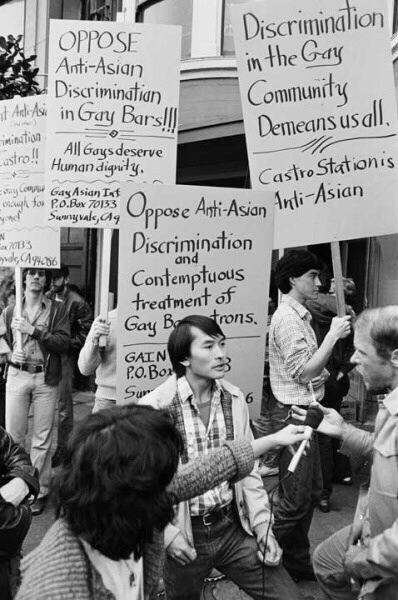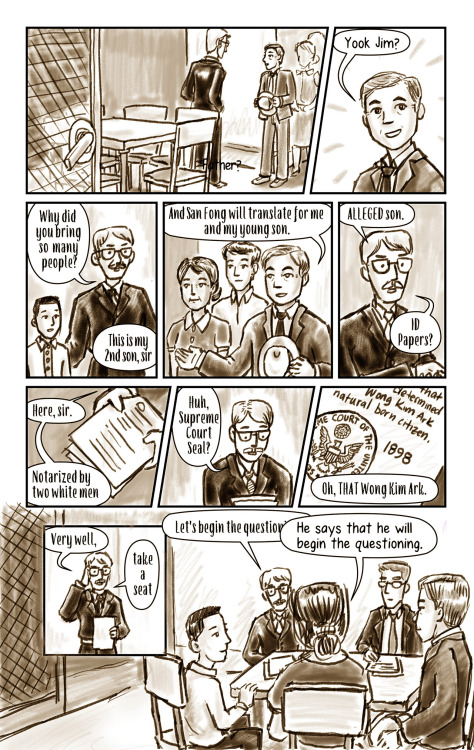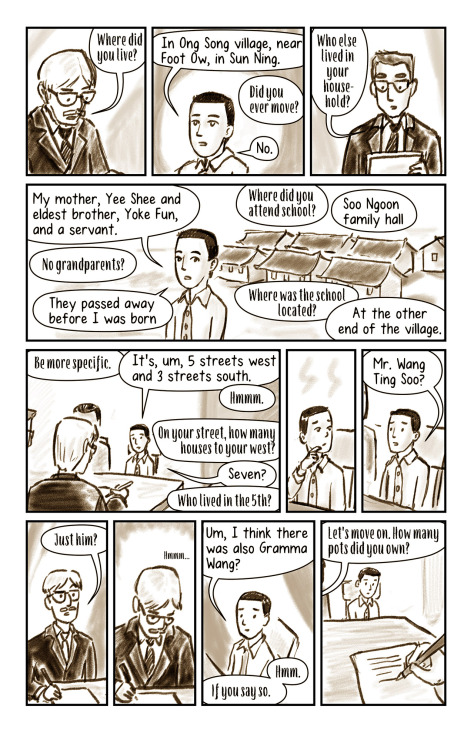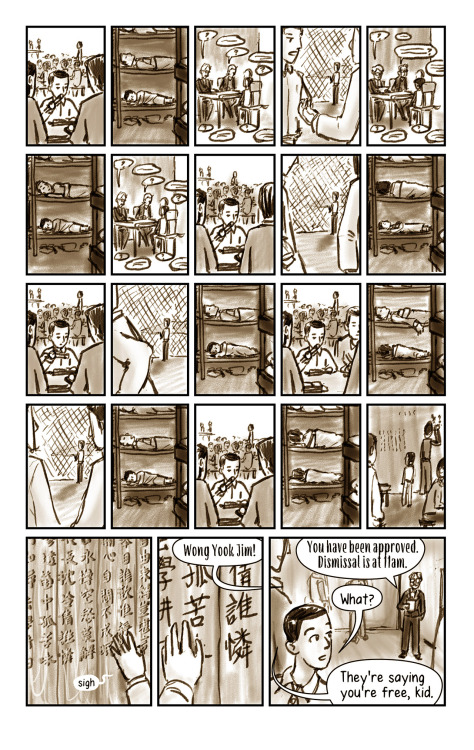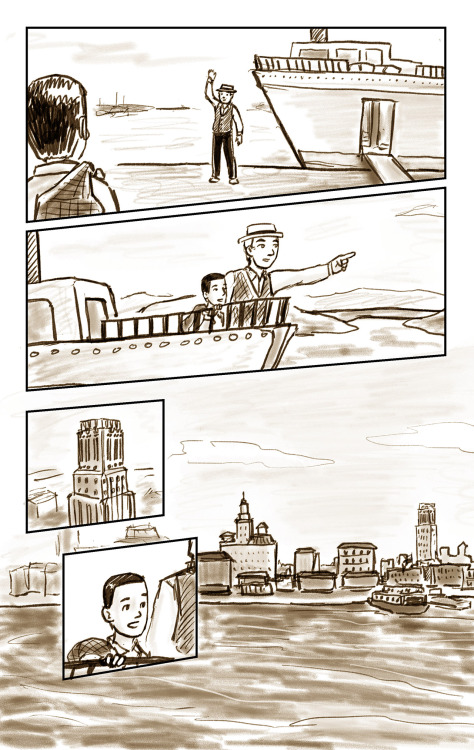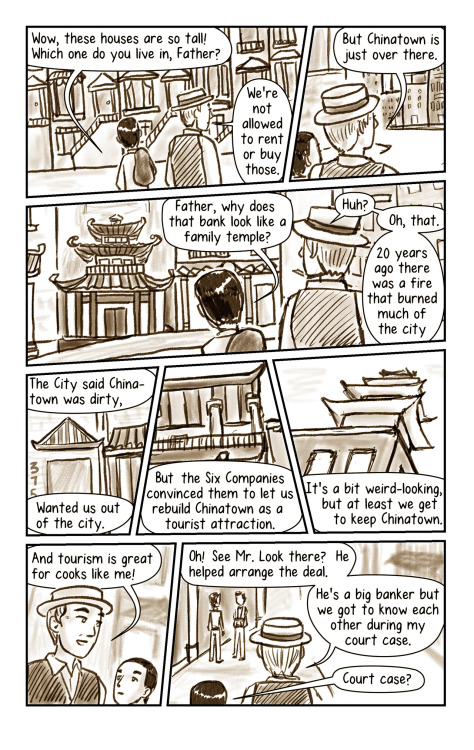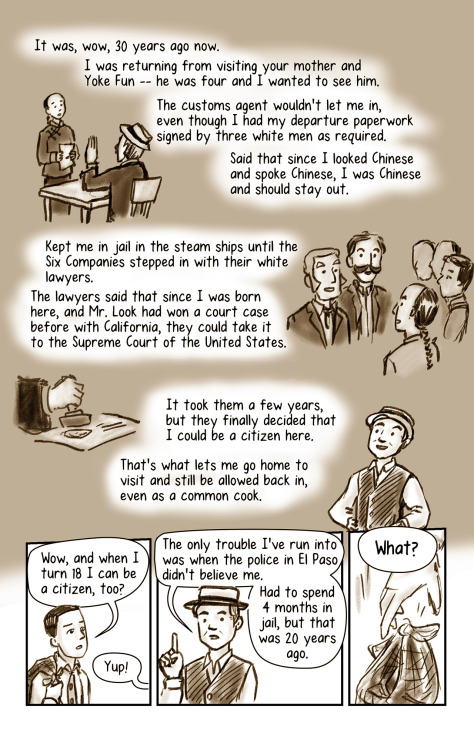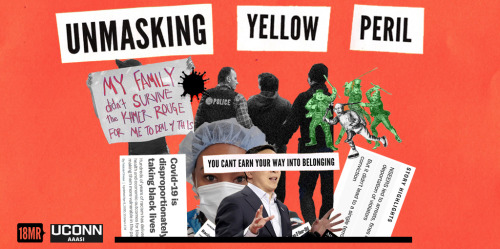#asian american history
Men in Los Angeles’ Little Tokyo read bulletins with instructions on their impending removal to incarceration camps, 4/11/1942.
Series: Central Photographic File of the War Relocation Authority, 1942 - 1945
Record Group 210: Records of the War Relocation Authority, 1941 - 1989
Image description: Men stand on a sidewalk and read a sign posted in an empty shop window. The sign is in Japanese.
Post link
Wearing his WWI U.S. Navy uniform, a man of Japanese descent arrives at Santa Anita Assembly Center after being forced to leave his home on the West Coast, 4/5/1942.
Series: Central Photographic File of the War Relocation Authority, 1942 - 1945
Record Group 210: Records of the War Relocation Authority, 1941 - 1989
Image description: A gray-haired man in a WWI US Navy dress uniform holds the open door of a car. Another man wearing a trenchcoat and an armband reading STAFF writes on a notepad.
Post link
Barracks at a temporary “Assembly Center” as people await transfer to an incarceration camp on 3/31/1942. About 120,000 people of Japanese descent were removed from their homes during WWII.
Series: Central Photographic File of the War Relocation Authority, 1942 - 1945
Record Group 210: Records of the War Relocation Authority, 1941 - 1989
Image description: A man sits on a bed in a building with wooden plank walls. Shelves hold some personal belongings such as books, shaving equipment, and a photo. Two other beds, some folding camp stools, and a table are also visible. A piece of fabric is nailed up in front of the window.
Post link
George and Michiko Uchida were married, 4/27/1942.
Two days later, they were taken to an incarceration camp for people of Japanese ancestry.
About two-thirds of the Japanese Americans incarcerated during WWII were American citizens.
Series: Central Photographic File of the War Relocation Authority, 1942 - 1945
Record Group 210: Records of the War Relocation Authority, 1941 - 1989
Image description: George and Michiko Uchida stand in front of a flower arrangement, holding hands. He is wearing a suit with a carnation in the lapel buttonhole; she is wearing a medium-dark dress with white collar and cuffs, and a large corsage of lilacs.
Post link
First-graders recite the Pledge of Allegiance at their school in San Francisco. People of Japanese ancestry, including children, would soon be removed from their homes on the West Coast and sent to incarceration camps. 4/20/1942.
Series: Central Photographic File of the War Relocation Authority, 1942 - 1945
Record Group 210: Records of the War Relocation Authority, 1941 - 1989
Image description: Children, some of Asian descent and some of European descent, stand in a line and hold their right hands over their hearts. One little boy is looking directly at the camera.
Post link
In response to “When were you born?” Civil War soldier Antonio Dardell answered, “Taken from China in childhood,” on this questionnaire, 4/16/1907.
Record Group 15: Records of the Department of Veterans Affairs, 1773 - 2007
Transcription:
3-447
East Division.
[illegible] Ex'r.
Inv orig No. 1,357,511
Antonio Dardell
Co. A, 27th Reg’t Conn Inf
Department of the Interior,
BUREAU OF PENSIONS,
Washington, D.C., April 16, 1907
SIR: To aid this Bureau in preventing any one falsely personating you, or otherwise committing fraud in your name, or on account of your service, you are required to answer fully the questions enumerated below.
You will please return this circular under cover of the inclosed envelope which requires no postage.
Very respectfully,
V. Warner.
Commissioner
Antonio Dardell
292 George street
New Haven, Conn
1. When were you born? Answer. Taken from China in childhood
2. Where were you born? Answer. China
3. When did you enlist? Answer. 22th October 1862
4. Where did you enlist? Answer. City of New Haven Con
5. Where had you lived before you enlisted? Answer. Clinton Con
6. What was your post-office address at enlistment? Answer. Clinton Con
7. What was your occupation at enlistment? Answer. Tiner Aprentice
8. When were you discharged? Answer. 25th July 1863
9. Where were you discharged? Answer. City of New Haven
10. Where have you lived since discharge? Give dates, as nearly as possible, of any changes of residence. Clinton + remove to New Haven Con 1869
11. What is your present occupation? Answer. Tiner
12. What is your height? Answer. 5 feet 9 ½ inches. Your weight? 127 The color of your eyes? Black The color of your hair? Was Black Your complexion? Dark Are there any permanent marks or scars on your person? If so, describe them.
13. What is your full name? Please write it on the line below, in ink, in the manner in which you are accustomed to sign it, in the presence of two witnesses who can write.
Antonio Dardell
[circular stamp]
PENSION
A
APR
27
1907
U.S.
OFFICE [end stamp]
WITNESSES: [curly bracket around 1 and 2]
1. Sherwood S Thompson
2. Rwl [?] S. Thompson
[square bracket] Witnesses who can write sign here. [close square bracket]
Date: April 26th, 1907
0-2
Post link
“the gay community was never racist”
shit y’all still are to this day
:/
I’m glad my post got around.. ppl need to see some history
In 1984, both African American and Asian American groups fought discriminatory door policies at bars across the city. Henry Chappell reported a double-carding incident at theWatering Hole on Folsom. Wearing a dress, heels, and a shawl, Chappell, an African-American self-identified transvestite, was asked for two forms of picture IDs as a means of excluding him from attendance. BWMT hoped that San Francisco would adopt a regulatory model for admittance based on Atlanta’s carding ordinance, which mandated that no bar could demand more than one valid ID per person.3 In part due to pressure from such actions, the City eventually passed a similar ordinance.
Around the same time, the Asian Lesbian and Gay Alliance (ALGA) conducted an informal study of various S.F. gay bars. One of the organizers later recalled, “White guys could sail through with no restrictions, but once color was added to the mix, the barriers went up.” The Midnight Sun and Castro Station were Castro bars particularly notable for their anti-Asian discriminatory practices. When confronted, the owners rationalized their multiple ID policies by claiming that it was difficult to visually discern Asian men’s age.ALGA picketed the Midnight Sun, attracting media coverage with placards such as“Discrimination in the Gay Community Demeans Us All.” During a KPFA radio debate,one participant recalled a bar owner claiming, “Your people don’t drink,” and “It’s a cruise bar; we would lose other clientele because they don’t want to cruise your type.”
-”Racism and Reaction in the Castro: A Brief, Incomplete History”
Post link
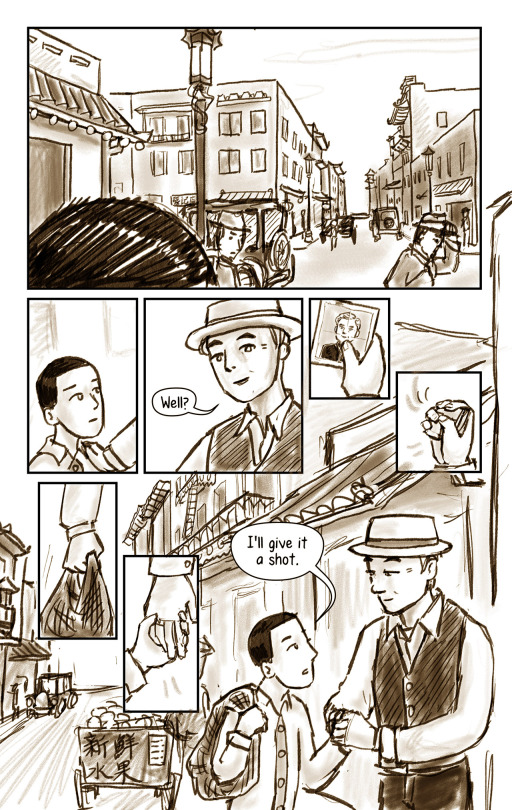
On AO3, with historical notes: https://archiveofourown.org/works/35305507
Also I have it printed as a booklet if you want that. (My comics website is http://soupycomics.com)
Post link
Japanese Americans incarcerated at the Portland Assembly Center published this newsletter, 6/5/1942. The Evacuazette documents life in the converted livestock exposition center.
File Unit: Unsolicited Testimony J, 1981 - 1982
Series: Unsolicited Testimony Files, 1981 - 1982
Record Group 220: Records of Temporary Committees, Commissions, and Boards, 1893 - 2008
Transcription:
Post link
Desert Exile: The Uprooting of a Japanese American Family
After the attack on Pearl Harbor, everything changed for Yoshiko Uchida. Desert Exile is her autobiographical account of life before and during World War II. The book does more than relate the day-to-day experience of living in stalls at the Tanforan Racetrack, the assembly center just south of San Francisco, and in the Topaz, Utah, internment camp. It tells the story of the courage and strength displayed by those who were interned.
Yoshiko Uchida (1921-92) was born in Berkeley, California, and was in her senior year at the University of California, Berkeley, when Japanese Americans on the West Coast were rounded up and interned. Traise Yamamoto is associate professor of English at the University of California, Riverside. She is the author of Masking Selves, Making Subjects: Japanese American Women, Identity, and the Body.
Post link
Not only do Asian Americans worry about surviving the virus, we also fear for our lives. Our loved ones are experiencing skyrocketing levels of unchecked hate and violence – over 100 hundred hate crimes a day. This violence is the latest iteration of Yellow Peril. It is a form of white supremacist settler nationalism that the U.S. pioneered to peddle racial fear and justify endless global war and the exploitation and expulsion of what they perceive as diseased and enemy Asians.
What we are experiencing in 2020 is tied to the violence of the mid-1800s when Chinese immigrants were targeted while risking their lives to lay railroad tracks. As a result of white suspicion and fear, the US passed racial bans on immigration and naturalization in the Chinese Exclusion Act of 1882. This law created a new gold standard in settler states and made Yellow Peril a core element of US national identity.
The onset of the COVID-19 pandemic fit the ready-made story of Yellow Peril in the US. Racist responses to the spread of the disease are consistent with a history of treating Asians as a foreign threat. Part of undoing the power of Yellow Peril is confronting the history of empire, capitalism, and white supremacy and building a vision of peace, justice, and health which celebrates and honors our interdependence.

Unmasking Yellow Peril is a collaboration between 18 Million Rising, the Asian and Asian American Studies Institute at UConn, and Jason Oliver Chang, Associate Professor of History and Asian American Studies at UConn. We seek to ground ourselves in the long history of Yellow Peril, uncover its many forms, and resist it in the time of COVID-19.
Yellow Peril has been here for more than a century, it’s time to unmask it.
Learn more about the history of Yellow Peril and download our free Unmasking Yellow Peril zine!
Post link
20 AAPI dishes, 20 artists, 11 writers, and 44 pages total!
We’re very proud of the beautiful art and the surprising and meaningful food histories compiled in this zine, all thanks to our fantastic contributing artists and writers. We truly feel that this zine can be a powerful resource to promote education on the important historical context of diverse Asian American and Pacific Islander (AAPI) food and culture.
Check out the link to the campaign, you can back our project and get a PDF of Family Style Zine for as low as $10, or a physical copy of the zine for if you back $15!
Please consider supporting AAPI creators and spreading the important stories behind the dishes in our community! Reblogs are much appreciated
HEY EVERYONE LOOK AT THIS AWESOME ZINE MY FRIEND CYNTHIA HAS CO-CREATED!!
They’re halfway to their goal! Support Asian-American/Pacific Islander artists/writers and read up on their food and culture. I actually contributed to the zine as a writer (one essay on Egg Tarts and another on Bahn Mi) so I know how seriously they’re taking the history aspect of this <33
Post link







